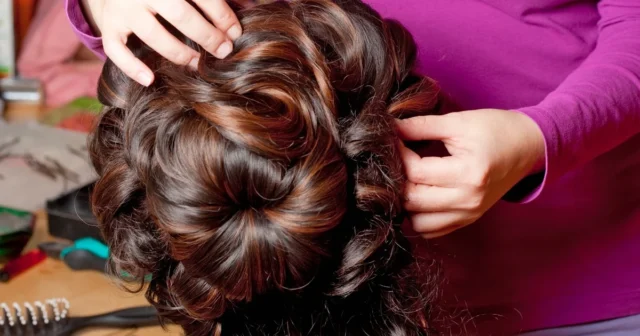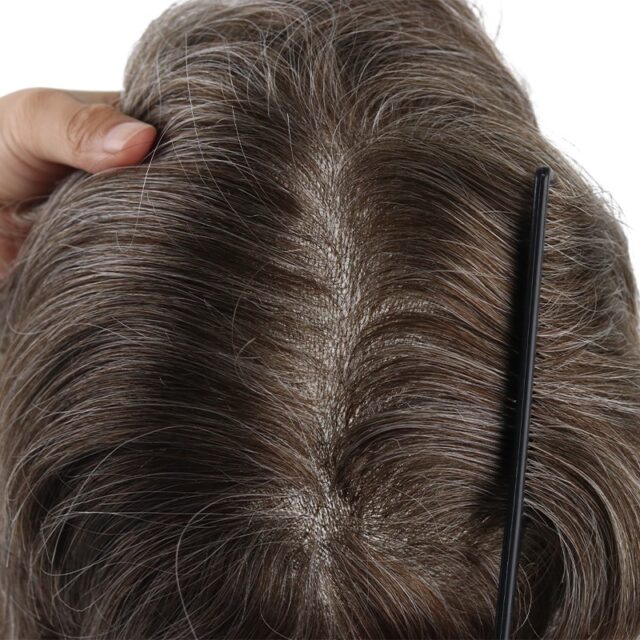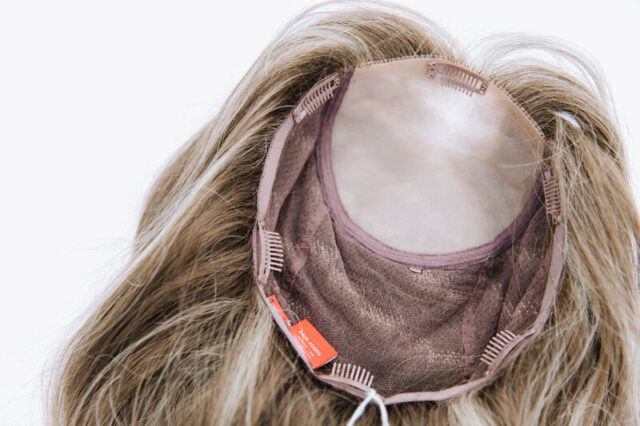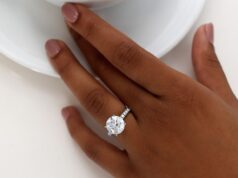
For both men and women experiencing progressive hair loss or thinning, today’s advanced hair systems offer cosmetically natural-looking solutions for restoring discreetly without undergoing surgery. This expansive 101 guide aims to cover all the fundamentals for loss sufferers exploring systems – what they are, how they work, types of systems, integration methods, proper care, general costs, choosing a provider, FAQs, and more.
Let’s dive into everything needed to make informed decisions about non-surgical hair system options.
What Are Hair Systems
Also commonly referred to as hairpieces, hair integrations, or toupees, The systems aim to cosmetically integrate artificial, synthetic, and/or genuine human hair fibers as a means for replacing that has thinned or receded, or been lost due to genetic, health-related, or environmental causes.
Partial to Full Scalp Coverage

Hair systems may provide partial coverage such as smaller hairpieces that fill in only thinning areas, or complete 100% scalp coverage depending on the extent and pattern of individual hair loss and personal style preferences. Partial typically aims to blend seamlessly amid existing biological hair for discrete thickening.
Custom-Made vs Stock Hair Systems
Fully custom hair systems are made-to-order pieces custom crafted based on impressions and measurements of a person’s unique head and any remaining hair shape and density patterns. This allows the creation of systems contoured specifically for each individual user. Stock systems are pre-designed, mass-produced pieces made to fit a more general head-shape template. Custom systems nearly always integrate more seamlessly.
Temporary Yet Securely Attached
While not a permanent hair restoration solution like transplants, excellent hair systems attach securely to anchor successfully onto the scalp or existing hair using various hair integration methods from medical adhesives to clips or tapes. High-quality custom systems typically last 4-6 weeks of wear before needing replacement or maintenance.
Who Are Hair Systems Suitable For?
Hair systems provide excellent non-surgical solutions primarily for individuals experiencing significant thinning, loss, or balding who desire natural-looking, undetectable restoration but prefer not to undergo permanent surgical hair procedures due to cost, limitations, upkeep factors, or personal choice.
Effective for Both Men and Women

While hair systems are commonly associated with men’s hair loss, customized systems prove equally effective cosmetic solutions for women suffering from progressive thinning, receding at temples, or more widespread hair loss conditions. The challenges are inherently similar for both genders.
Limited Options for Total Baldness
Individuals who are already completely bald across the entire scalp, or have extremely limited native hair remaining, often lack enough native hair coverage for systems to adequately anchor or blend amid. But some specialized custom integration systems for slick fully shaved scalps are increasing. Overall, some bio hair assists integration.
Ideal Candidates for Pattern Hair Loss
Those experiencing gradual genetic male or female pattern hair loss characterized by classic receding at frontal temples and crown thinning tend to be ideal candidates for meticulously crafted customized hair systems that strategically recreate natural, biologically believable hairlines, gradients, and density distribution.
Hair System Base Material Options
The cap, base, or foundation of a system refers to the materials on which the integrated hair strands are attached. There are a variety of common base options, each with distinct properties influencing breathability, durability, flexibility, and overall naturalness.
Intricately Knotted Lace Bases

These involve ultra-delicate lace fabric woven from fine Swiss, French, or Italian knots. Lace is selectively bleached to mimic average scalp color. The intricate lace mesh pattern creates a transparent, ventilated foundation that appears blended into the scalp for invisibility. It’s lightweight and breathable but more fragile.
Lightweight Monofilament
This base uses an ultra-fine, gauze-like single filament polyurethane mesh material containing thousands of minuscule perforations per square inch. This enables the grafted hair to individually emerge from the scalp in a natural pattern while allowing the scalp below to breathe freely. It provides a supremely natural appearance.
Thin Skin Polyurethane
This base uses an astoundingly thin, skin-mimicking polyurethane film designed to flexibly adhere and contour to the exact shape of the scalp and skin for a customized fit. Advanced nano-thin polyurethane exhibits good breathability making it suitable for integration bases that need to flex and move naturally with the skin. The material is quite durable.
Hair Fiber Types Used in Systems
The hairs grafted into the base constitute the visible portion of the system. This system uses either synthetic fibers, real human hair, or a strategic blend.
Synthetic Hair Fibers
These consist of synthetic hair strands made from various blended plastic polymers like kanekalon, nylon, polyester, or modacrylic that are engineered in laboratories to emulate certain desirable properties of real humans such as sheen and softness. Less expensive and generally easier to maintain than human hair.
Human Hair Fibers

For the most realistic look, feel, and movement, premium hair systems crafted solely with real human hair remain the gold standard. The cuticles and biological structure make human hair move, reflect light, and style like life growing from the scalp. Far pricier than synthetic due to rarity and labor intensity but provides the most seamlessness.
Blended Human and Synthetic Hair
Some systems tactically combine synthetic and human fibers throughout the piece. Synthetic hair may save costs on interior zones or perimeter areas while more premium human hair is strategically concentrated at the top or front hairline where most visible for maximum realism precisely where needed most. This optimized blend helps balance benefits.
Hair System Integration Methods
How the fibers integrate with existing hair and/or the scalp significantly influences the naturalness, security, maintenance needs, and versatility of the system. Integration is a true art form.
Strand-by-Strand Bonding
This meticulous method uses advanced medical-grade glues and bonding agents uniquely formulated for skin and hair to securely adhere the system’s strands directly to any remaining native hair follicles for the most graduated, seamless integration. Enables very natural results.
Clips, Tapes, or Adhesives
Some systems attach via skin-safe temporary clip fasteners, specialized toupee tapes with microscopic hooks, skin implants, or temporary gluing to anchor the system in place. These facilitate ease of attachment and more styling versatility versus bonded systems. But they’re generally less secure than precision bonding.
Customized Partial Hairpieces/Toppers

Smaller customized mini systems target integrating into just the thinning problem zones rather than the entire scalp. Popular options are partial toppers for the crown or mini frontal systems to recreate just the front hairline and temples. These blend amid existing with extreme stealth.
Secure Suction on Shaved Scalps
Some men’s systems designed for slick fully shaved scalps employ secure suction technology to adhere the interior of the base tightly onto the skin for stable anchoring without the need for adhesives or remaining. It attaches via safe vacuum pressure.
Caring for Your Investment: Follow Proper Maintenance
Since high-end systems represent a sizable financial investment, following optimal cleaning and care practices helps protect quality and extend usable durability and longevity significantly.
- Adhere closely to the manufacturer’s specific cleansing, conditioning, and drying steps for the type of fibers used; human hair requires far more specialized shampooing, hydrating, and handling.
- Wash, treat, and thoroughly air-dry systems on a specialized wig stand about once every 1-2 weeks depending on wear. But avoid over-washing which can damage fragile hair fibers.
- Be extremely cautious about using brushes, excessive heat from blow dryers/irons, and harsh chemical treatments that degrade delicate hair strands over time.
- Store hair properly per guidelines in cool, dry, dark conditions. Keep fibers meticulously detangled before and after each use. Prevent knots and matting that shorten lifespan.
Weigh Options Carefully, But Solutions Exist
Excellent non-surgical systems available today offer cosmetic solutions capable of restoring natural appearance and self-confidence very discretely for both men and women experiencing significant hair loss or thinning. With knowledgeable guidance from specialists, patients can find well-integrated customized systems creatively tailored to their unique needs, goals, lifestyle, and budget. If considering weigh options carefully. But solutions exist.









